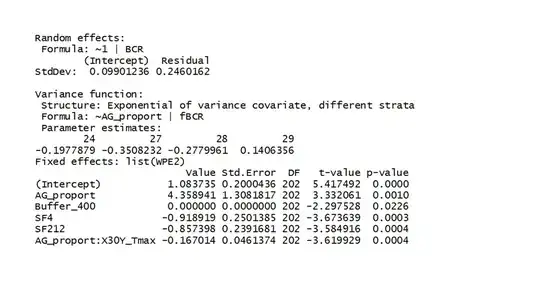A binomial random variable is based on independent trials, often modeling sampling with replacement. A hypergeometric random variable is based on trials that are not independent, often modeling sampling without replacement.
A major difference between the two models is that for 'comparable' situations, the hypergeometric random variable has a smaller variance. Intuitively, you can view this
as a consequence of the variety of choices decreasing for later trials because the
'population' becomes depleted due to sampling without replacement.
Consider an urn with 8 green chips (successes) and 8 red ones (failures). You sample $n = 8$ chips from the urn.
Random variable $X$ counts the successes under sampling with replacement. Then the probability of success on any one trial (draw) is $p = 8/16 = 1/2$ and $X \sim \mathsf{Binom}(n=8,p=1/2),$ with $E(X) = np = 8(1/2) = 4,$
$Var(X) = np(1-p) = 8/4 = 2.$
Random variable $Y$ counts the successes under sampling without replacement. Then
the draws are not independent. Defining $p = g/T = 8/16 = 1/2,$ one can show that
$E(Y) = np = 4,$ $$Var(X) = np(1-p)\left(\frac{T-n}{T-1}\right) = 2\frac{16-8}{16-1}
= 2(8/15) = 16/15 = 1.0667.$$ Bear in mind that a a chips of one color are selected it becomes more likely to draw a chip of the opposite color on the
next draw, so probabilities are affected by the depletion of the urn when
sampling is without replacement.
Simulating a million realizations of each random variable in R, sample means and
variances should agree with population means and variances, respectively, to a couple of decimal places:
set.seed(330)
x = rbinom(10^6, 8, .5)
mean(x); var(x)
[1] 4.000247 # aprx E(X) = 4
[1] 1.997837 # aprx Var(X) = 2
y = rhyper(10^6, 8,8, 8)
mean(y); var(y)
[1] 4.001567 # aprx E(Y) = 4
[1] 1.066994 # aprx Var(Y) = 1.0667
Here are bar charts for the relevant binomial (blue) and hypergeometric distributions
in the example above. Notice that hypergeometric probabilities are more concentrated
near the center.

g = 0:8
pdf.b = dbinom(g, 8, .5)
pdf.h = dhyper(g, 8,8, 8)
hdr = "PDFs of Binomial (blue) and Hypergeometric Dist'ns"
plot(g-.05, pdf.b, type="h", ylim=c(0,.4), lwd=2, col="blue",
ylab="PDF", xlab="green", main = hdr)
lines(g+.05, pdf.h, type="h", lwd=2, col="brown")
abline(h = 0, col="green2")
